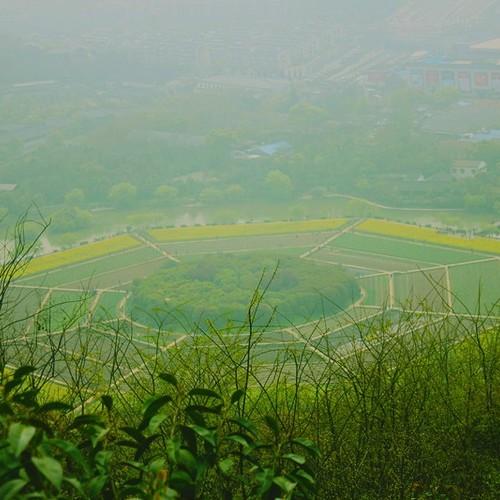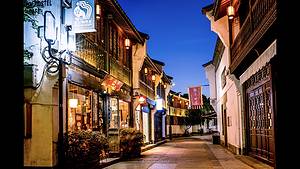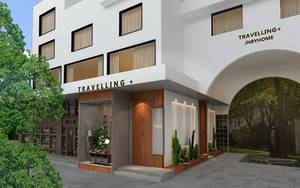Visit the Thunder Peak Pagoda to inquire about the biography of the White Snake
1 cities |
13 attraction(s) |
total distance 32
km
 TIPS
TIPS
Day1
Day2
Day1: HANGZHOU
8 attraction(s) ·
21 km
1
The China Grand Canal Museum is located west of the Beijing-Hangzhou Grand Canal, next to the ancient Gongchen Bridge. In front of the museum is a canal cultural square, which is a place for many citizens to relax and play. The architectural style of the museum is "traditional but not antique". The building is arranged in a fan-shaped layout around the canal cultural square, with a combination of flat and sloping forms. The facade incorporates traditional Chinese architectural symbols in a refined and simplified manner. Through a unique open layout, the indoors and outdoors are integrated, and the canal, bridges, boats, and wharfs are ingeniously used as living exhibits. The museum introduces the historical changes and culture of the Beijing-Hangzhou Grand Canal through five exhibition halls. Interested friends may want to come here for a visit.
2
km
2
Zhi Wei Guan is a famous old-style restaurant that attracts guests from afar. The snacks here are classic and diverse, with authentic and unique flavors like Xiaolongbao, sugar lotus root, cat's ears, and Pian'er Chuan. The Hangzhou-style dishes here are also well-prepared, including must-try dishes like Dongpo pork and West Lake vinegar fish. Pro tip: Yanggongdi branch and Renhe Road flagship store specialize in Hangzhou-style dishes.
12
km
3
It is the place where Xuxian and Bai Niangzi meet in "The Legend of the White Snake", adding a lot of romance to this long bridge.
5
km
4
Hefang Street is located at the foot of Wushan Mountain and is part of Qinghefang. It is an ancient street with a long history and profound cultural heritage.
1
km
5
The Drum Tower is located east of Wushan in Hangzhou, with Shenwu Guixiang to the south, Dajing Lane to the north, Zhonghe Road to the east, and Wugong Mountain to the west. It was built in the Southern Dynasty during the Five Dynasties period, about 1400 years ago, and was once a palace called "Fulin Hall" for the emperors of the Southern Song Dynasty. It was commonly known as the Drum Tower by the local people. It was demolished in the 1960s and rebuilt in 2003. The huge Dongyang woodcarvings "Qingming Shanghe Tu" and "Drum Tower Scenic Picture" are installed above the exhibition hall. The drum on the second floor has a diameter of two meters, and the century-old peace bell is located on the observation deck, where tourists can play the drum and ring the bell to enhance their travel experience and evoke a sense of nostalgia.
1
km
6
Hu Xueyan was the wealthiest person in the late Qing Dynasty. His residence combines Chinese and Western architectural styles, creating an extremely luxurious Jiangnan garden, which can be called the first mansion of the late Qing Dynasty's prominent merchants in China.
2
km
7
It's a street of snacks with numerous food stalls. You can order food and use a stored-value card at each stall. No deposit or handling fee is required, and you can get a refund anytime.
1
km
8
The location is excellent, with convenient access to nearby bus stops for sightseeing. It is also close to West Lake, and within a five-minute walk to Nan Song Imperial Street and Hu Xueyan's Former Residence. The hotel rooms are nice and clean. Highly recommended!
Day2: HANGZHOU
5 attraction(s) ·
12 km
2
It is a landmark of West Lake, built by King Qian Hongchu of Wuyue Kingdom to celebrate the birth of his son, but now it is more famous because of the legend of "The Legend of the White Snake".
1
km
3
Water Bamboo House, located near the Leifeng Pagoda, is definitely a recommended restaurant with high cost performance for Hangzhou-style cuisine. The owner runs the restaurant herself, so the prices and flavors are both fair and won't deceive tourists. The silver carp tastes great and is of large size, the Dongpo pork is also delicious, the eggplant is good, and the West Lake sauce duck is also recommended. The owner is sincere and worthy of recommendation.
4
km
4
The Bagua Field is located at the southern foot of Yuhuang Mountain, and it is a unique farmland in the shape of a Bagua diagram. According to legend, the emperor of the Southern Song Dynasty chose this auspicious land at the foot of Yuhuang Mountain to show solidarity with the people. The field was divided into eight symmetrical sections, and the emperor personally cultivated it. In the middle is a mound shaped like Taiji. After hundreds of years, despite the changes in history, this ancient field has remained intact and is still cultivated today. The Bagua Field also exhibits different colors throughout the year due to the different crops planted, such as corn, runner beans, cucumbers, sunflowers, all creating a beautiful view of yellow, green, and red soil when seen from above, especially in the summer.
4
km
5
The Qiantang River Bridge was designed by renowned bridge expert Mao Yisheng and is also the first railway and highway dual-use bridge designed and built in China; a statue of Mr. Mao Yisheng can also be seen at the bridgehead.






























